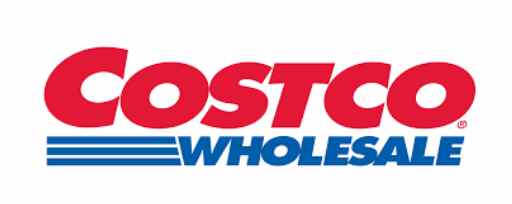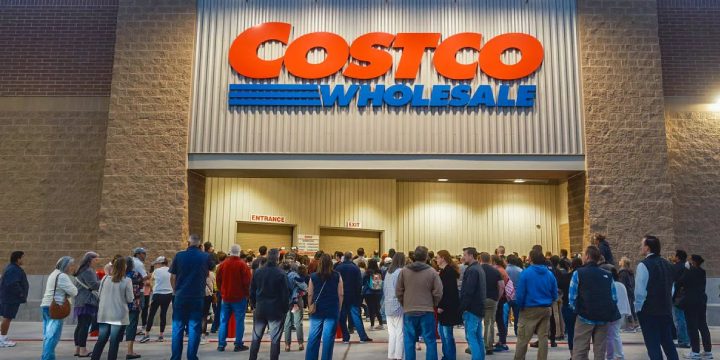Leading the Grocery Industry with Innovation and Value

Costco, the membership-only warehouse giant, is an undeniable powerhouse in the global retail sector. With 882 warehouses worldwide, including 609 in the U.S., and more than 134 million loyal members, the company has become a staple for consumers seeking quality goods at low prices. Known for its bulk offerings, Costco is more than a discount store—it is a unique shopping experience that blends affordability with aspirational consumption. As one of the top three retailers globally, Costco has a massive influence over multiple industries, from groceries to electronics, and its private label, Kirkland, generates more revenue than even household names like Coca-Cola and Nike.
What sets Costco apart from its competitors is its focus on value, a customer-first approach, and a growing emphasis on technology-driven innovations. As the retail landscape evolves, so too does Costco, adapting to emerging trends in e-commerce, delivery, and omnichannel experiences, while maintaining its core commitment to competitive pricing and high-quality products.
Costco has long been known for its in-store shopping experience, but it has also made significant strides in its e-commerce capabilities. In the third quarter of 2024, the company saw a 20.7% year-over-year increase in e-commerce sales, outpacing the growth of its overall revenue. With online orders, app downloads, and deliveries on the rise, Costco is proving that it can meet the demands of the digital consumer.
To further improve its digital presence, Costco has been upgrading its website and mobile app. The company’s recent efforts to enhance the online shopping experience, including a redesigned website header, a more prominent search bar, and improved messaging capabilities are notable. Additionally, Costco has rolled out a digital membership card, allowing customers to easily scan their membership and access exclusive deals via the app.
The company’s mobile app has undergone a transformation, with continuous updates each month. Features such as barcode scanning, warehouse savings tools, and shopping list management have been added, making it easier for members to shop in-store. These improvements have led to a dramatic increase in the app’s rating, rising from 2.3 stars to an impressive 4.7 stars. Costco has also launched a digital optical store where customers can virtually try on glasses before purchasing them for in-store pickup.
Despite being a latecomer to the e-commerce game, Costco is quickly catching up by integrating advanced technologies into its operations. One of the most significant moves has been the company’s focus on unified commerce, which aims to create a seamless shopping experience across various channels. Whether in-store or online, Costco is leveraging technology to enhance operational efficiency and improve the overall shopper experience.
Costco is also diving into retail media by launching a retail media network to serve ads to members based on their purchasing history. This new venture will allow Costco to monetize shopping insights while offering targeted, personalized marketing to its members. This effort, which is led by a former Walmart marketer, represents a shift in Costco’s historically cautious approach to consumer data. As companies like Amazon and Walmart push deeper into retail media, Costco’s move into this space signals its readiness to compete in this rapidly growing market.
Moreover, Costco’s use of generative AI and other emerging technologies is expected to further enhance its operational efficiency. By harnessing innovations like AI, Costco can provide a more personalized shopping experience for its members while streamlining processes behind the scenes.
Our focus has always been on delivering value to our members, and we’re using technology to make that experience more seamless, whether they’re shopping online or in-store.

Leveraging Emerging Technologies
E-commerce Growth and Digital Transformation
Costco has been expanding its omnichannel reach by deepening partnerships with delivery platforms like Uber Eats and Instacart. Originally piloted in 2021, Costco’s partnership with Uber Eats has grown to include several locations across the U.S., providing members with convenient grocery delivery. The company has also worked with Instacart to expand its offerings, including a prescription delivery service and reduced annual membership fees for Costco members who use Instacart+.
These partnerships are not just about increasing convenience; they also align with Costco’s commitment to providing value. Costco members can enjoy savings on Uber Eats orders and discounted Uber One memberships, further enhancing the value of their Costco membership. As demand for fast, reliable delivery services grows, these collaborations position Costco to stay competitive in the ever-evolving grocery landscape.
Costco’s success is rooted in its ability to foster customer loyalty. Membership fees remain a significant driver of profit, contributing $1.12 billion to the company’s bottom line in the most recent quarter. The membership model not only generates revenue but also ensures that members are deeply invested in the Costco experience. With a 93% renewal rate, Costco has one of the highest levels of member loyalty in the retail industry.
The secret to Costco’s loyalty lies in its unwavering commitment to value. While other retailers have struggled with inflation and supply chain disruptions, Costco has kept prices low by maintaining its competitive merchandise mix. The company’s fresh foods, bakery items, and organic produce are popular among budget-conscious consumers, particularly those grappling with the high cost of living. New product additions like the lemon blueberry loaf and chocolate chip cookies continue to draw customers into its stores.
Moreover, Costco’s legendary customer service, no-questions-asked return policy, and high wages for employees create an atmosphere of trust and satisfaction. By paying its employees an average of $26 per hour—significantly higher than the industry average—Costco ensures a stable, motivated workforce, which in turn enhances the overall customer experience.
Growing Partnerships and Omnichannel Expansion
Maintaining Customer Loyalty Through Value and Experience

Looking ahead, Costco has ambitious plans for expansion. The company expects to open 28 new stores in fiscal 2024, with a capital expenditure target of approximately $4.5 billion. This growth is fueled by strong store traffic, which continues to increase despite economic uncertainties. Costco’s ability to attract customers in both good times and bad is a testament to its resilience and strategic vision.
In addition to physical store growth, Costco’s leadership is focused on expanding its reach through technology and innovation. The company is committed to making continuous improvements to its mobile app and website, ensuring that the Costco shopping experience remains convenient and accessible for its members.
Costco’s blend of value, customer loyalty, and innovative technology has solidified its place as a leader in the grocery industry. From its growing e-commerce platform to its partnerships with delivery services, Costco is adapting to the changing retail landscape while staying true to its core principles. As the company continues to expand its omnichannel capabilities and invest in emerging technologies, it is poised to maintain its dominance in the years to come.



